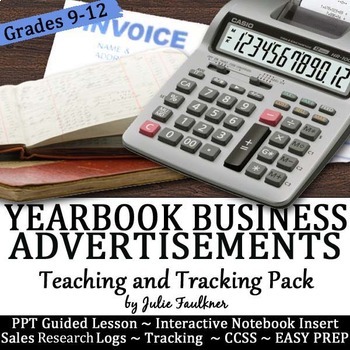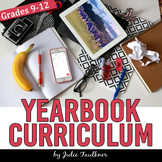Yearbook Business Advertisements Teaching Pack, Tracker, Interactive Notebook
- Zip
What educators are saying
Also included in
- In this yearbook bundle, you'll have everything you need to plan, prepare, market, design, and create your student publication with this one-stop resource for your yearbook program. This yearbook curriculum includes all of my best-selling tools for creating a yearbook and conducting a yearbook and/oPrice $148.22Original Price $164.69Save $16.47
Description
This business ad teaching pack is designed to help you teach your students how to get the most out of selling business advertisements for your student publication. It will walk your students through researching the history of the ads, charting and analyzing that data, as well as calling and collecting the money.
Included:
- PDF & PPT Guided Lesson
- One page interactive notebook insert for notes
- Reader's Theater Scripts for dealing with brush-offs
- Sales History Tracker and Questions for Analysis
- Biz Ad Rubric
- Sales Tracker Logs
- CCSS Math and Literacy Standards
Be the first to know about my new discounts, freebies and product launches. Look for the green star next to my store logo and click it to FOLLOW ME. Voila! You will now receive email updates about my store.
For more ideas and inspiration:
Julie's Classroom Stories on Instagram
Julie's Classroom Stories on Facebook
Teaching Middle and High School English Facebook Group
Yearbook and Journalism Facebook Group
Terms of Use: Created by Julie Faulkner, updated 2018
Please, one classroom use only. Additional licenses are sold at checkout. This license is nontransferable. Not eligible for online environments unless password protected. Posting openly online is prohibited. No part of this resource can be used for commercial purposes, altered, or resold. This work is my original work, and taking portions of it to create something else for resale is prohibited.





